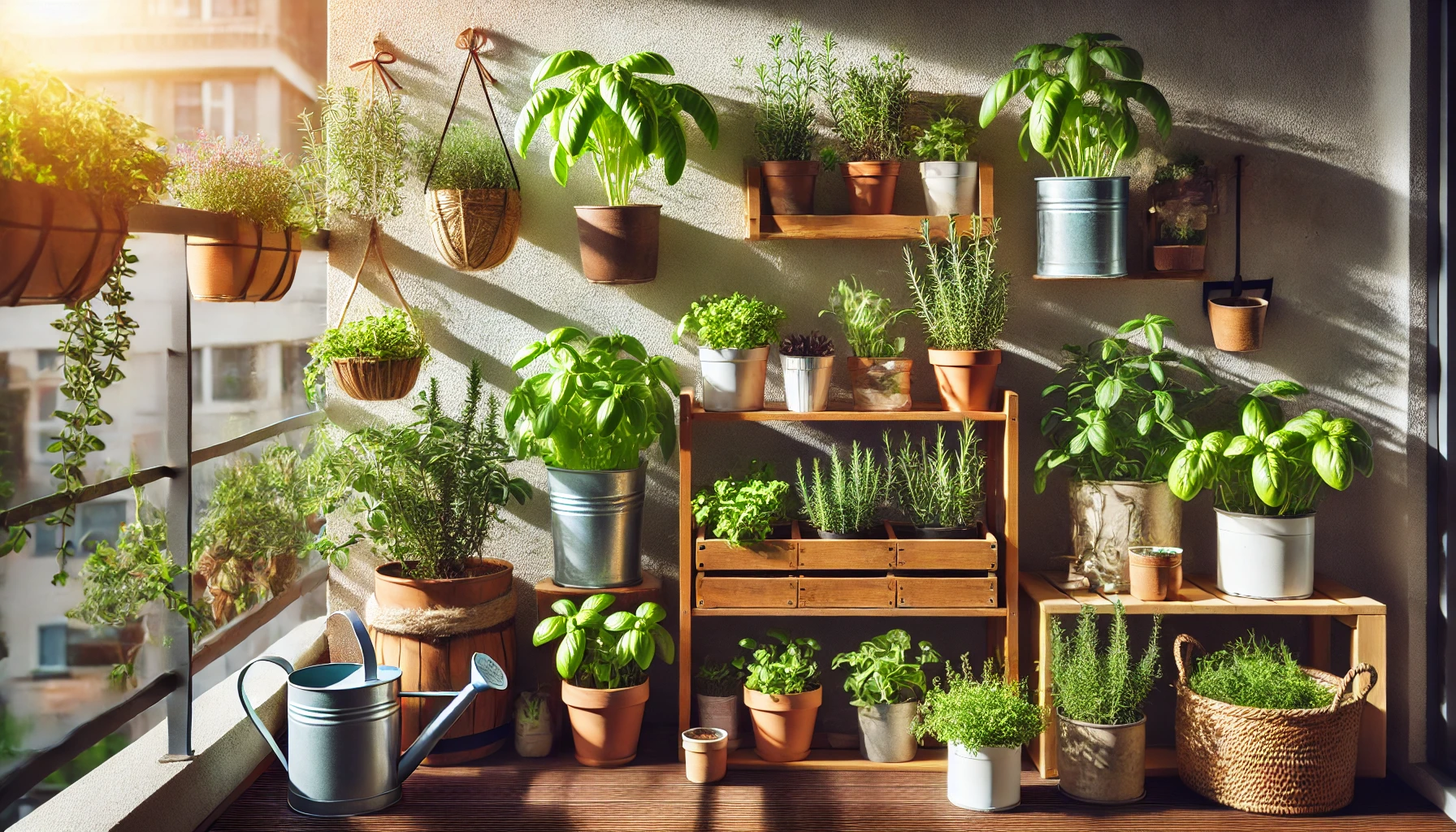Having fresh herbs at home is not only convenient but also a great way to add greenery to your space. Even if you live in an apartment, a small balcony is enough to grow a thriving herb garden. In this guide, you’ll learn how to set up and maintain a successful herb garden in a limited space.
1. Choosing the Right Herbs for Your Balcony
Some herbs are better suited for container gardening and small spaces. Here are some of the best options:
Easy-to-Grow Herbs
- Basil – Grows well in pots and thrives in warm weather.
- Mint – Spreads quickly and is very low-maintenance.
- Parsley – Adapts well to containers and partial sunlight.
- Chives – A hardy herb that grows year-round.
- Thyme – Drought-tolerant and perfect for small spaces.
- Rosemary – Loves the sun and requires little water.
- Oregano – Great for cooking and easy to grow in pots.
Consider your local climate and sunlight availability before choosing your herbs.
2. Selecting the Right Containers
Herbs grow well in different types of containers, as long as they provide good drainage.
- Clay or terracotta pots – Allow better airflow and prevent overwatering.
- Plastic pots – Retain moisture better, ideal for hot climates.
- Hanging baskets – Great for small spaces and trailing herbs like thyme.
- Window boxes – Perfect for balconies with railings.
Make sure each container has drainage holes to prevent root rot.
3. Preparing the Soil
Herbs thrive in light, well-draining soil. Use a high-quality potting mix with added perlite or sand to improve drainage. Avoid using garden soil, as it may become too compact in containers.
To boost plant health, consider adding organic compost or a slow-release fertilizer.
4. Positioning Your Herb Garden for Optimal Growth
Most herbs require at least 4-6 hours of sunlight per day. Position your pots in the sunniest part of your balcony, such as near railings or on wall-mounted shelves.
If your balcony gets limited sunlight, choose shade-tolerant herbs like mint and parsley.
5. How to Plant Your Herbs
You can start your herb garden from seeds, seedlings, or cuttings.
Planting from Seeds
- Fill your container with potting soil, leaving an inch from the top.
- Sprinkle the seeds evenly and cover lightly with soil.
- Water gently to keep the soil moist until germination occurs.
Planting from Seedlings
- Dig a small hole in the soil.
- Remove the seedling from its nursery pot and gently loosen the roots.
- Place the plant in the hole and cover it with soil.
- Water thoroughly.
Planting from Cuttings
- Take a cutting from an existing herb plant (about 4-6 inches long).
- Remove the lower leaves and place the stem in a glass of water.
- After roots appear, transfer it to soil and water lightly.
6. Watering and Maintenance
Herbs in containers dry out faster than those in the ground. Keep the following tips in mind:
- Water when the soil feels dry – Stick your finger into the soil; if the top inch is dry, it’s time to water.
- Water in the morning – This prevents evaporation and allows plants to absorb moisture throughout the day.
- Avoid overwatering – Too much water can lead to root rot.
Regularly trim your herbs to encourage growth. Pinching off the tops of basil and mint, for example, prevents them from becoming too tall and leggy.
7. Fertilizing for Healthier Herbs
Herbs don’t need heavy feeding, but occasional fertilization can help them grow stronger.
- Use an organic liquid fertilizer every few weeks.
- Avoid over-fertilizing, as this can reduce the flavor of the herbs.
- Compost or natural fertilizers like coffee grounds can be used sparingly.
8. Dealing with Common Problems
- Wilting or yellowing leaves – Usually a sign of overwatering. Reduce watering and check for proper drainage.
- Leggy growth – Happens when herbs don’t get enough sunlight. Move them to a sunnier spot or trim them back.
- Pest issues – Use neem oil or homemade soap sprays to keep aphids and spider mites away.
9. Harvesting Your Herbs
Harvesting regularly helps herbs grow better. Here’s how to do it correctly:
- Pick leaves from the top, rather than stripping the plant bare.
- Never remove more than one-third of the plant at a time.
- For best flavor, harvest in the morning before the sun gets too hot.
After harvesting, you can use fresh herbs immediately or dry them for later use.
10. Enjoy Your Balcony Herb Garden
With just a little effort, you can have a thriving herb garden right on your balcony. Fresh herbs not only enhance your cooking but also improve air quality and bring nature into your home. Experiment with different herbs, adjust their care as needed, and enjoy the convenience of having homegrown flavors at your fingertips.

